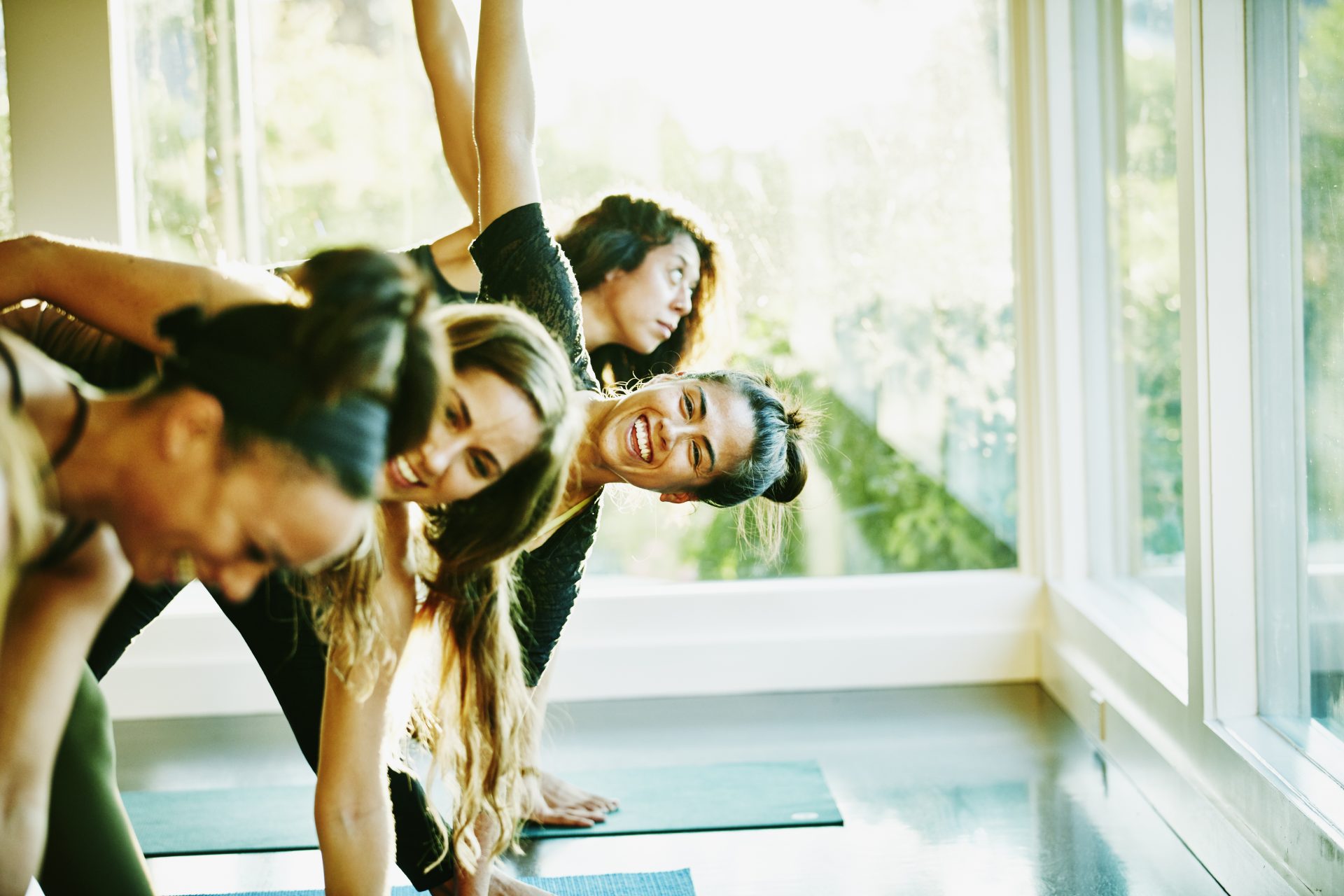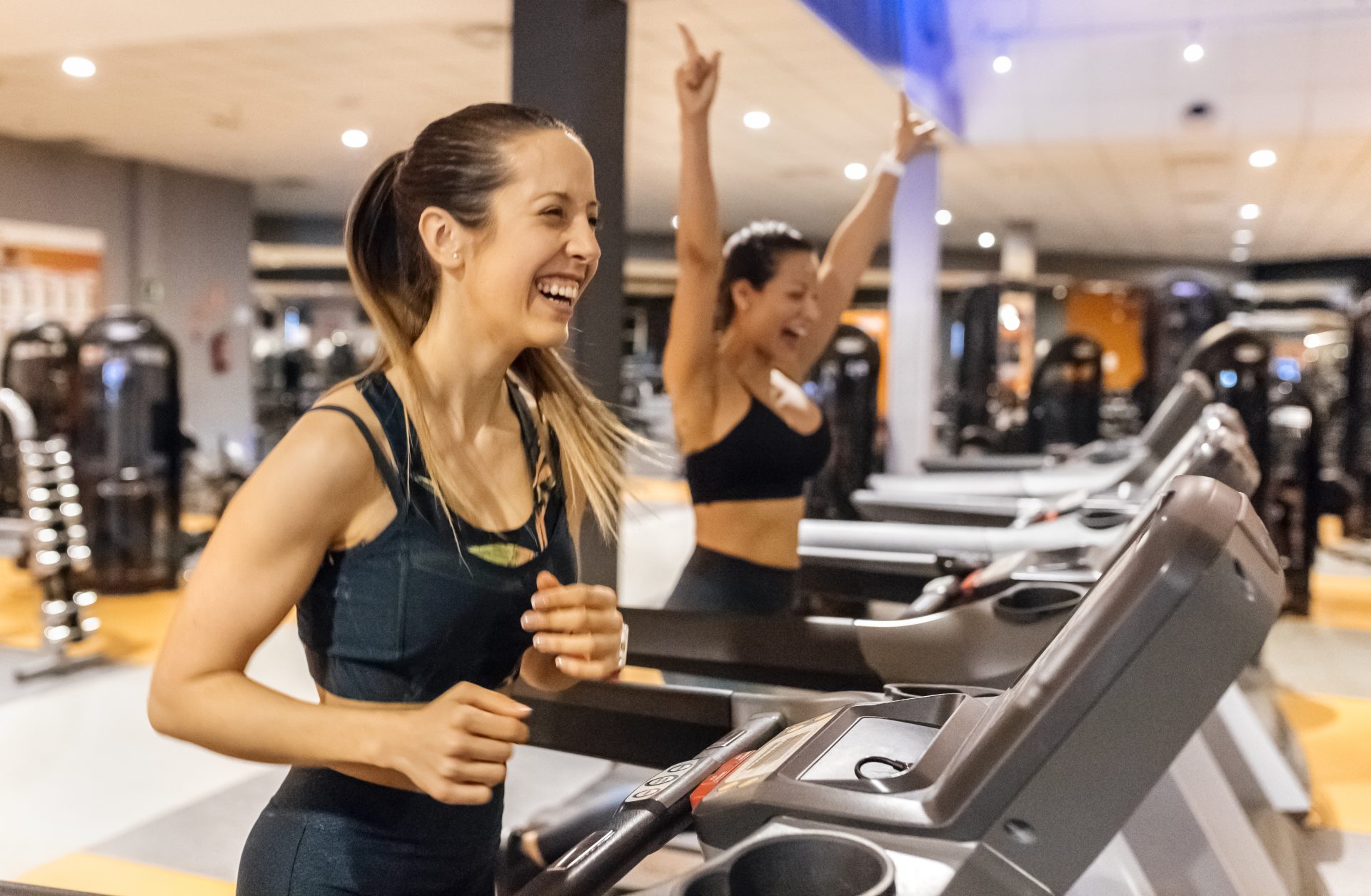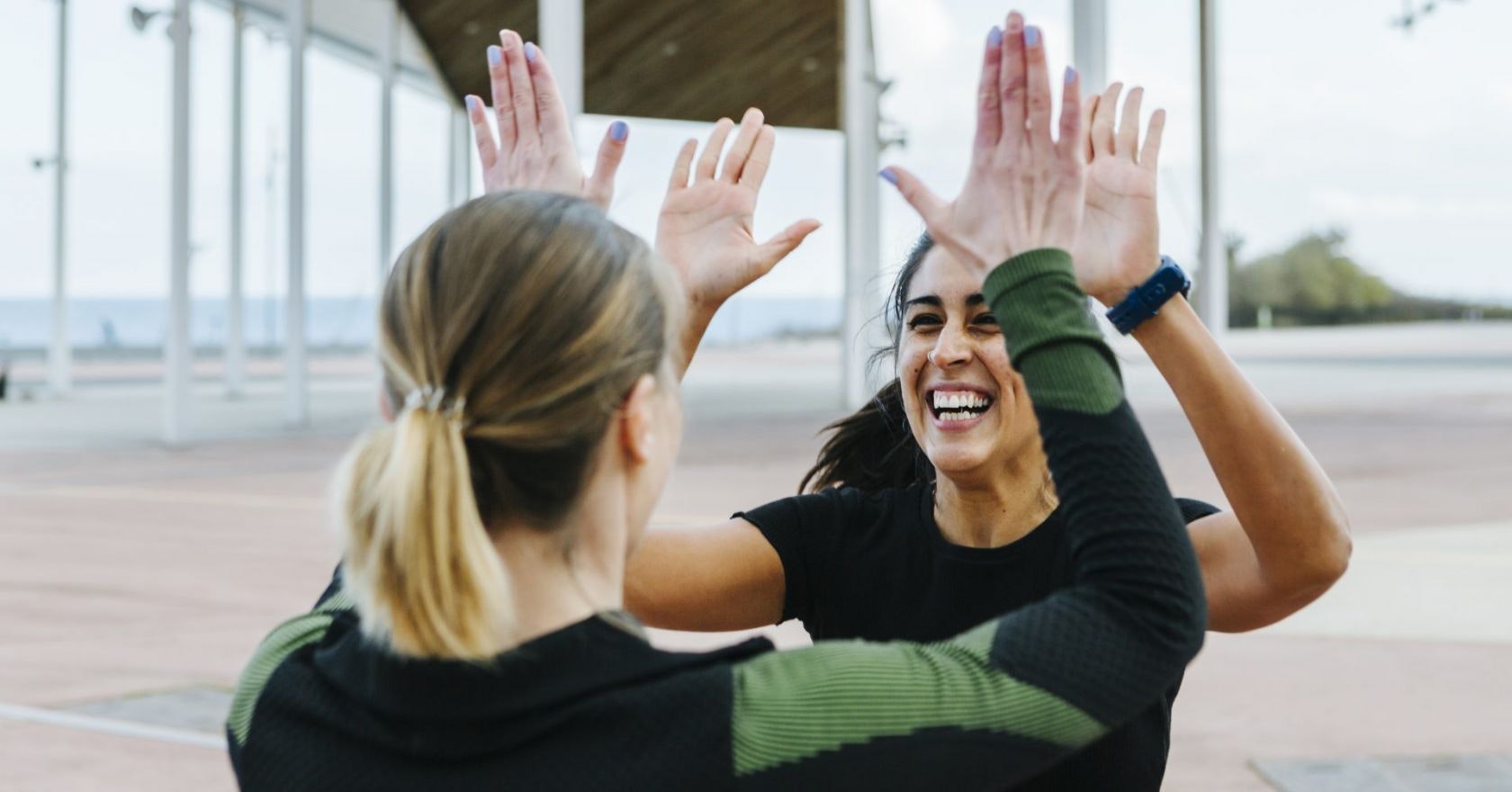We all know that workout buddies can be good for motivation, but not all friends are equal according to studies. Kerry Law puts the research to the real-life test.
We all have those friends who are our social go-to for various needs: the one who’ll accompany you to that random play you want to watch. The one you see when you need a good laugh. The one you message if you fancy a low-key catch-up at home.
But do you apply the same logic to workout partners? Who’s best to run with? Who’s a brilliant cheerleader? Who makes the gym feel less intimidating?
With many of us kickstarting our fitness routines this month, a fair few will be doing so with a mate to stay motivated. But research suggests that when it comes to fitness, not all friends are equal. Differences in your and your friend’s fitness levels, ability, attitude and gender, as well as the type of activity you do together, can all have an impact on your workout.
You may also like
Fitness challenge: “How joining a 4-week plan motivated me to find my community”
The pros and cons of working out with a friend
‘Social motion’ enhances emotional bonds and reduces pain
A study by the University of Oxford found that ‘social motion’ (coordinated movement such as synchronised stretches or exercising side-by-side on a rowing machine) promotes social bonding and prosocial behaviour, increasing perceptions of togetherness and cohesion.
Building on existing evidence, researchers found that compared with solo and unsynchronised exercise, synced exercise resulted in a higher pain threshold – thought, in part, to be down to the release of those feel-good endorphins.
Train with someone 40% better than you to improve performance
Researchers at Kansas State University conducted a study where women exercised on a stationary bike solo and then with a virtual partner who they were told was riding approximately 40% further than them. Riding with the virtual partner led participants to record distances up to 200% further than their solo rides.

Researchers found that if an exercise partner is roughly your level or exponentially better, the motivation to perform better disappears – a level approximately 40% better was optimal.
‘Exercise contagion’ depends on gender
A study, published in Nature, of 1.1 million runners across the globe explored ‘exercise contagion’ – ie whether we ‘catch’ the motivation to exercise from others. One key finding was that gender plays a role: same-sex exercise pairings registered high levels of influence on each other.
However, while men’s exercise behaviour is influenced by both men and women, women aren’t influenced by men at all, only women.
Emotional support helps us exercise more often
A study into the influence of exercise partners by the University of Aberdeen divided gym buddies into two types: emotional and instrumental.
It not only found that people exercise more often when they team up with a friend, but that they exercise even more if their friend offers emotional support and encouragement, over those offering just practical support.
Solo versus paired workouts
Zahra Sefiani, assistant programme director at Nuffield Health, believes both solo and partner-based workouts have their place. “When people exercise on their own it allows them to focus on their own goals and avoid getting distracted.
“However, I see a lot of people work out together, especially when doing a HIIT or circuit-based session. These are easy to structure for two people and you can mix things up to be partner dependent – for example, challenge yourself to hold a squat hold until your partner completes 10 burpees. It’s often more motivating to have a friend next to you, and it can encourage some healthy competition.”
I’m in the solo workout camp: runs, swims and gym visits are ‘me time’, an opportunity to zone out to podcasts and playlists while I exercise. But I have to admit that I’ve become a little stuck in my comfort zone. Perhaps working out with some mates will give my routine a boost. But when do fitness friends work, and when is it best to go it alone? I tested it out over four workouts.
Session 1: Gym (with a female friend)
My friend K is a super-efficient, practical type who commits to a gym visit and sticks to it. I can rely on her being there when she says she is (a good start).
We both agree that navigating the gym with a friend is a lot less intimidating than on your own – we play about with machines we’re not so familiar with without embarrassment (there’s no need for gymtimidation but still…).
She’s stronger than me, so I follow her settings – attempting 40kg on the abductor, rather than my go-to 25kg, and am surprised that it’s not beyond me. We finish with a plank, held almost twice as long as I normally would with K’s encouragement to go 10 seconds beyond what’s comfortable.
Verdict: Someone better than me really did push me beyond my usual “that’s enough” target. An efficient friend = a productive session.
You may also like
How to run a faster 5k: can walking more make you a better runner?
Session 2: Running
My friend S and I are both average runners but want to improve. I need to break free from my usual interval format (3 mins running, 2 mins walking, repeat for 20 mins) and build stamina. We decide to run for seven minutes non-stop, which I haven’t done since completing the Couch to 5K years ago.
Going beyond my usual time has me struggling but S is full of Joe Wicks-style upbeat encouragement and pushes us on. We end up running non-stop for over eight minutes before going again. This may not sound a lot to seasoned runners but it’s a victory for us and we’re both amazed we can do it. We make a pact to run regularly, building to 30 mins non-stop like we used to.
Verdict: Cheerleaders work! Although there’s zero chance for a chat – apparently I need all my oxygen for running…
Session 3: Gym (with a male friend)
Back at the gym but now with D, who is male and younger than me. Research suggests I won’t be influenced by him, but given that Gen Z are at the forefront of fitness fads, maybe D will help me to discover new ways of exercising.
Turns out, the research rings true – I am the influencer. D prefers to be shown what to do in a gym by “an expert” (I assume he doesn’t mean me) so he can do things correctly. (It’s reassuring to know that gym confidence is something we all grapple with.)
I introduce him to the 12:3:30 workout – it’s low-impact enough for us to hold a conversation which helps the 30-minute slog go by quicker. I also get him involved in my 30-day splits challenge – which includes some stretchy yoga positions which he finds “impressive” and is pretty good at. But as for being influenced by me… nah, apparently he’s only really influenced by himself. Oh well, perhaps our ‘synchronised movement’ will enhance those social bonds in time.

Verdict: Influencing others provides a little confidence boost (and satisfies my inner yoga teacher). I also have someone who shares my borderline obsession with fitness stats (yes, let’s compare heart rate zones!).
Session 4: Swimming
I haven’t seen L for a while but I know we won’t have much opportunity to chat as we’re swimming. She admits to doing what she calls “nana swimming”, a slow breaststroke while keeping your head constantly above the surface. Great for conversations, bad for back ache as any swim coach will tell you.
I share this advice when a few laps leave her with neck pain. She changes technique, finds it works so vows to buy some goggles and keep practising. We chat in between laps, but her breaststroke and my bursts of front crawl aren’t conducive to swimming together.
Verdict: Swimming is a solo activity for me. However, booking a swim with a friend means accountability, and that stops us finding excuses to flake out. We can chat over coffee another time.
Images: Getty
Source: Read Full Article
